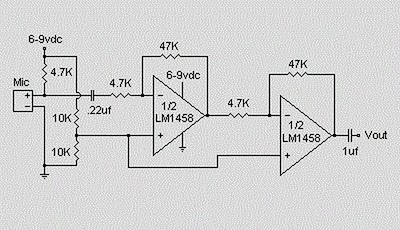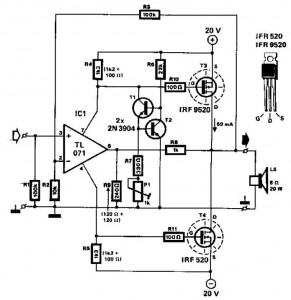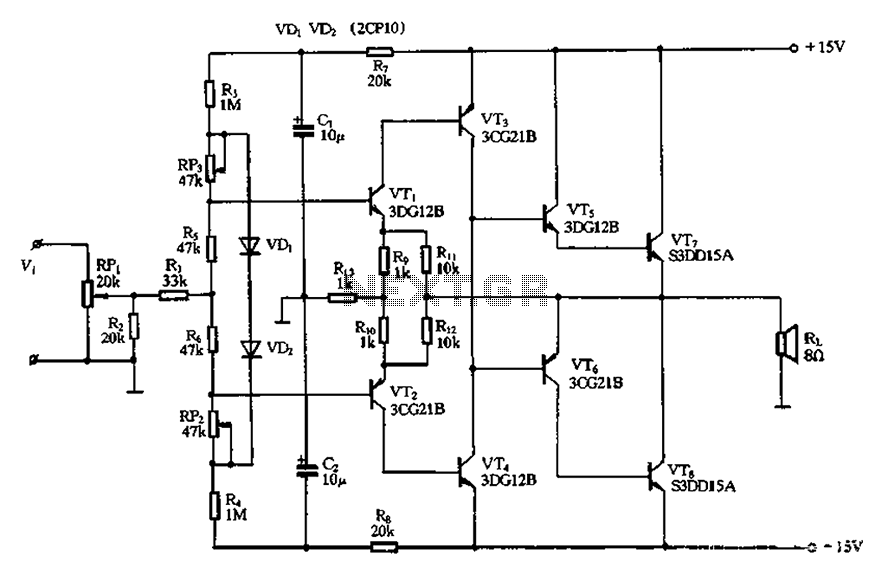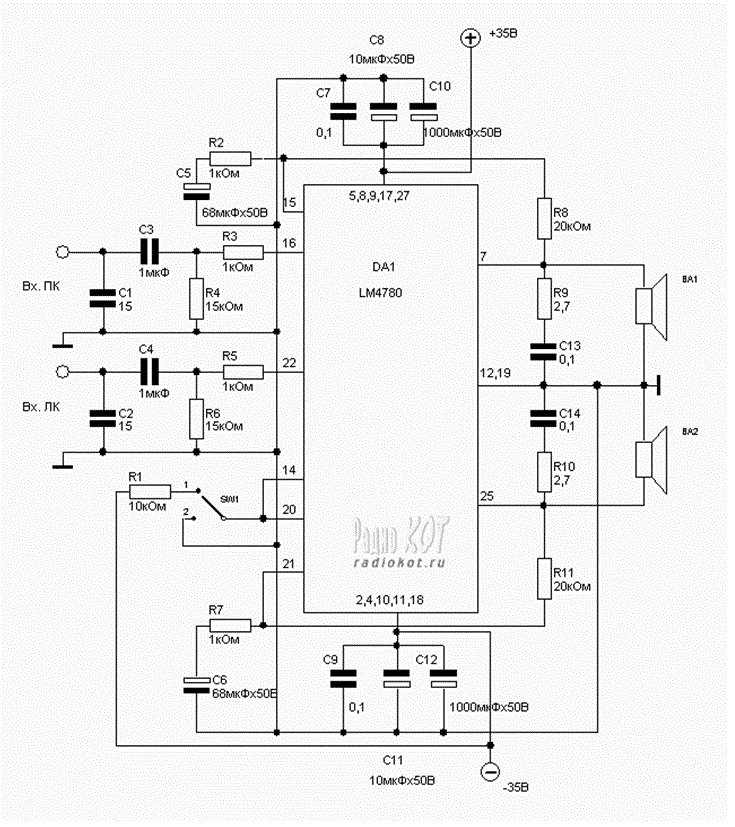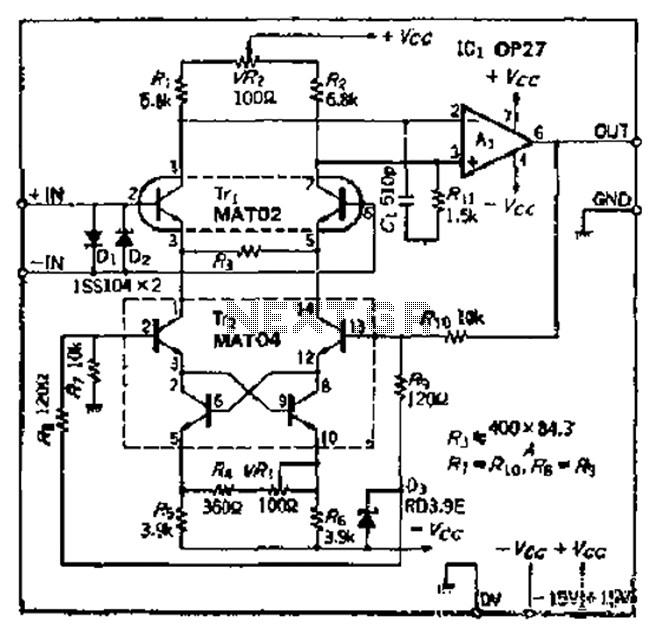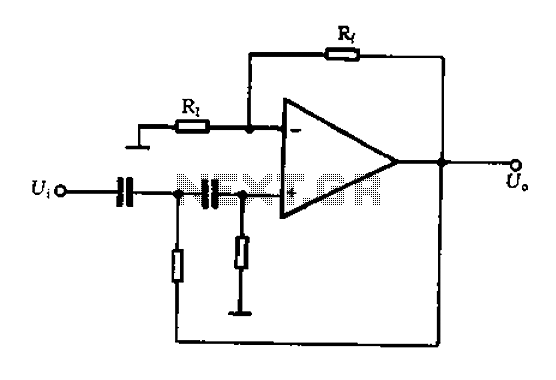
high current 10 to 20 amp automatic
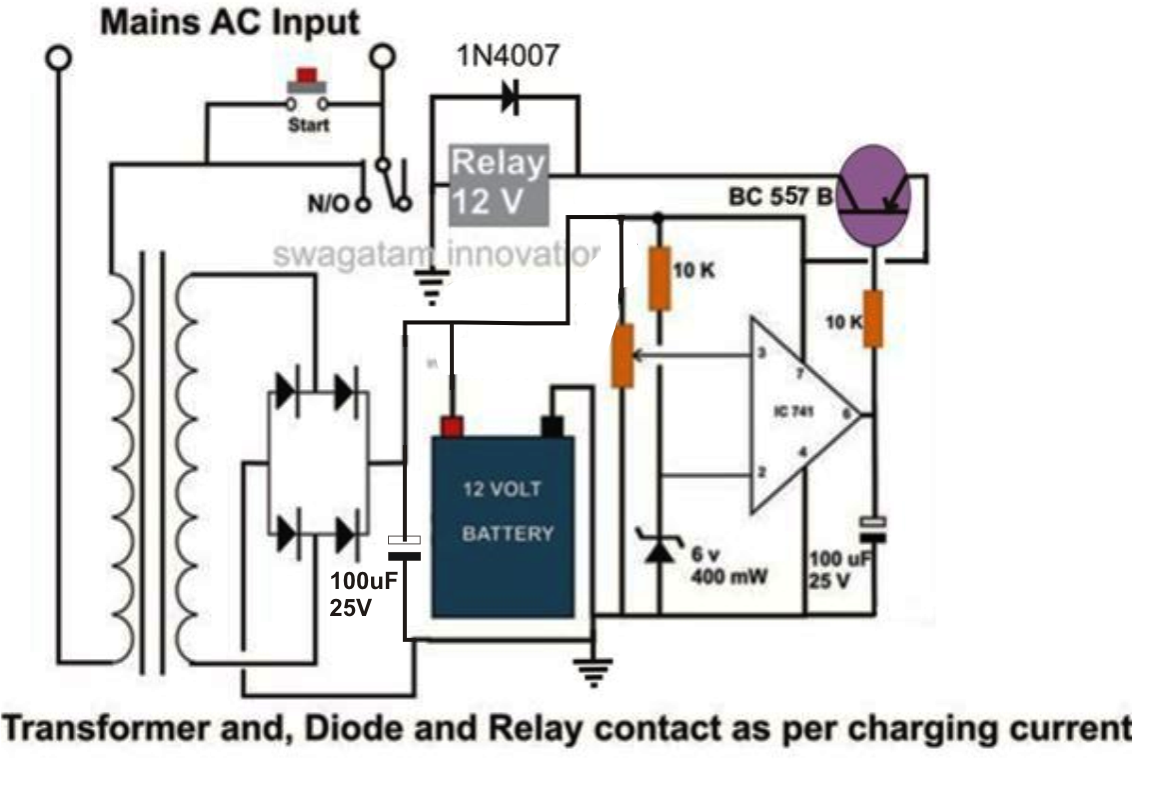
This design is intended for charging high-capacity lead-acid batteries in the range of 100 to 200 Ah. The system operates automatically, disconnecting power from both the battery and itself once the battery is fully charged. For simplicity, a filter capacitor after the bridge rectifier has been omitted; however, for improved DC output to the battery, a 1000uF/25V capacitor can be added across the positive and negative terminals of the bridge. The next component is an op-amp 741 integrated circuit (IC) functioning as a voltage comparator, which monitors the battery voltage during charging and provides an output at pin #6 based on the detected voltage. The preset is calibrated so that the IC switches its output at pin #6 when the battery voltage reaches approximately 14 volts, which corresponds to the nominal transformer voltage under normal operating conditions. Initially, the circuit is powered by pressing the "start" switch, which temporarily bypasses the relay contacts to activate the circuit. This action turns on a transistor and the relay, which then latches the power through its contacts, allowing the circuit to remain active and charge the battery even after the "start" switch is released. The circuit will remain powered until the start button is pressed again, provided that the connected battery voltage is below the set threshold of 14 volts. To initiate the charging process, the start button should be pressed and held while adjusting the preset until the relay trips at the specified transformer voltage of around 14 volts. When the battery is discharged, the circuit voltage will drop below 14 volts, causing the circuit to latch and commence the charging sequence as previously described.
This battery charging circuit design is structured around a bridge rectifier that converts AC voltage from a transformer into DC voltage suitable for battery charging. The inclusion of a 1000uF/25V capacitor across the bridge output enhances the smoothing of the rectified voltage, reducing ripple and providing a more stable DC output for effective charging.
The op-amp 741 is utilized as a voltage comparator, where its non-inverting input is connected to a voltage divider that sets the reference voltage corresponding to the fully charged state of the battery. When the battery voltage exceeds this reference, the op-amp output changes state, which is critical for controlling the relay and thus the charging process. The relay acts as a switch that can handle the high current required for charging large batteries, ensuring that the circuit can manage the load without overheating or failing.
The initial activation of the circuit through the "start" switch is a crucial design feature, allowing for manual control of the charging process. This mechanism ensures that the system does not inadvertently start charging when it is not intended, providing an additional layer of safety. The latching relay maintains power to the charging circuit, allowing it to operate independently of the start switch once engaged.
In summary, this circuit is designed to automatically manage the charging of high-capacity lead-acid batteries, ensuring safety and efficiency through careful voltage monitoring and control. The implementation of key components, such as the bridge rectifier, filter capacitor, op-amp comparator, and relay, collectively contribute to a reliable and effective battery charging solution.This design can be used for charging high current lead acid batteries in the order of 100 to 200 AH, the design is perfectly automatic and switches of the power to the battery and also itself, once the battery gets fully charged. A filter capacitor after the bridge network has been ignored for the sake of simplicity, however for better DC outp
ut to the battery one can add a 1000uF/25V capacitor across the bridge positive and negative. The next stage consists of an opamp 741 IC voltage comparator, which is configured to sense the battery voltage while it is being charged and switch its output at pin #6 with the relevant response. The preset is adjusted such that the IC reverts its output at pin #6 when the battery becomes fully charged and reaches about 14 volts which happens to be the transformer voltage at normal conditions.
Initially, power to the circuit is initiated by pressing the "start" switch. On doing this, the switch bypasses the contacts of the relay and powers the circuit momentarily. This switches ON the transistor and the relay, the relay instantly latches the power via its relevant contacts such that now even if the "start" switch is released, the circuit remains switched ON and begins charging the connected battery. The circuit gets completely switched OFF until the start button is pressed once again and the connected battery has a charge that`s under the set 14 volt mark.
Switch ON power by pressing the start button and keep it depressed manually, simultaneouslyadjust the preset such that the relay just trips or switches OFF at the given rated transformer voltage which should be around 14 volts. Due to the discharged battery, now the voltage to the circuit will drop under 14 volts and the circuit will instantly latch, initiating the procedure as explained in the above section.
🔗 External reference
This battery charging circuit design is structured around a bridge rectifier that converts AC voltage from a transformer into DC voltage suitable for battery charging. The inclusion of a 1000uF/25V capacitor across the bridge output enhances the smoothing of the rectified voltage, reducing ripple and providing a more stable DC output for effective charging.
The op-amp 741 is utilized as a voltage comparator, where its non-inverting input is connected to a voltage divider that sets the reference voltage corresponding to the fully charged state of the battery. When the battery voltage exceeds this reference, the op-amp output changes state, which is critical for controlling the relay and thus the charging process. The relay acts as a switch that can handle the high current required for charging large batteries, ensuring that the circuit can manage the load without overheating or failing.
The initial activation of the circuit through the "start" switch is a crucial design feature, allowing for manual control of the charging process. This mechanism ensures that the system does not inadvertently start charging when it is not intended, providing an additional layer of safety. The latching relay maintains power to the charging circuit, allowing it to operate independently of the start switch once engaged.
In summary, this circuit is designed to automatically manage the charging of high-capacity lead-acid batteries, ensuring safety and efficiency through careful voltage monitoring and control. The implementation of key components, such as the bridge rectifier, filter capacitor, op-amp comparator, and relay, collectively contribute to a reliable and effective battery charging solution.This design can be used for charging high current lead acid batteries in the order of 100 to 200 AH, the design is perfectly automatic and switches of the power to the battery and also itself, once the battery gets fully charged. A filter capacitor after the bridge network has been ignored for the sake of simplicity, however for better DC outp
ut to the battery one can add a 1000uF/25V capacitor across the bridge positive and negative. The next stage consists of an opamp 741 IC voltage comparator, which is configured to sense the battery voltage while it is being charged and switch its output at pin #6 with the relevant response. The preset is adjusted such that the IC reverts its output at pin #6 when the battery becomes fully charged and reaches about 14 volts which happens to be the transformer voltage at normal conditions.
Initially, power to the circuit is initiated by pressing the "start" switch. On doing this, the switch bypasses the contacts of the relay and powers the circuit momentarily. This switches ON the transistor and the relay, the relay instantly latches the power via its relevant contacts such that now even if the "start" switch is released, the circuit remains switched ON and begins charging the connected battery. The circuit gets completely switched OFF until the start button is pressed once again and the connected battery has a charge that`s under the set 14 volt mark.
Switch ON power by pressing the start button and keep it depressed manually, simultaneouslyadjust the preset such that the relay just trips or switches OFF at the given rated transformer voltage which should be around 14 volts. Due to the discharged battery, now the voltage to the circuit will drop under 14 volts and the circuit will instantly latch, initiating the procedure as explained in the above section.
🔗 External reference
Warning: include(partials/cookie-banner.php): Failed to open stream: Permission denied in /var/www/html/nextgr/view-circuit.php on line 713
Warning: include(): Failed opening 'partials/cookie-banner.php' for inclusion (include_path='.:/usr/share/php') in /var/www/html/nextgr/view-circuit.php on line 713
